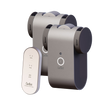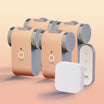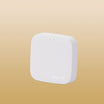The rapid development and accelerated integration of the current Internet of Things, big data, and artificial intelligence technologies have spawned the artificial intelligence of things (AIoT), a promising emerging frontier field.
Among them, artificial intelligence models and algorithms are good at discovering patterns and learning strategies from massive disordered data, while the Internet of Things can establish extensive connections for hundreds of millions of physical devices.
Therefore, the fusion of artificial intelligence and the Internet of Things will play a more assertive role in collaborative perception computing, but at the same time, it will also bring more problems and challenges worthy of in-depth exploration.
Unlike the human-centered Internet, AIoT is a new type of network that integrates technologies in the four fields of electronics, communications, computers, and artificial intelligence.
The extensive interconnection of things, people, and the environment, thus elevating the connection scope and connection method of the traditional "Internet" and "Internet of Things" to the connection, symbiosis, and deep integration of "human, machine, and material" heterogeneous subjects.
AIoT usually includes
-
a physical perception layer,
-
network connection layer,
-
intelligent computing layer, and
-
comprehensive application layer at the architecture and implementation level.
AIoT first perceives various types of data (environmental data, operation data, business data, monitoring data, etc.) in real-time through the networking of different heterogeneous devices and then processes it on terminal devices, edge devices, or the cloud through extensive data mining or machine learning algorithms.




















Leave a comment
All comments are moderated before being published.
This site is protected by hCaptcha and the hCaptcha Privacy Policy and Terms of Service apply.